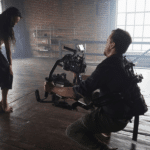In the intricate world of jewelry making, one process stands out for its captivating blend of artistry and science: Precious Metal Melting and Casting. This fascinating technique transforms raw materials into exquisite pieces of jewelry, capturing the essence of beauty and craftsmanship. In this comprehensive guide, we will delve into the heart of this process, shedding light on its stages, the role of technology, safety measures, and the journey from raw material to finished product.
Discover more about the intricate art of Precious Metal Melting and Casting.
The Basics of Precious Metal Melting and Casting
Melting and casting precious metals are integral parts of jewelry making. Metals such as gold, silver, platinum, and palladium are commonly used, each requiring specific handling due to their unique properties. The initial preparation involves cleaning the metal to remove any impurities. The metal is then heated until it melts and is subsequently poured into a mold to create various shapes – a process known as casting.
The Role of Technology in Melting and Casting
In recent years, technology has played a significant role in transforming traditional melting and casting processes. Modern machinery and equipment, like those offered by CDOCAST, have brought numerous advantages. These include improved efficiency, as machines can melt and cast metals more quickly than manual methods. Precision has also been enhanced, with machines being able to control temperatures accurately, ensuring optimal conditions for each type of metal. Moreover, the quality of the final products has significantly improved, with fewer defects and inconsistencies.
Safety Measures and Best Practices
Given the high temperatures involved in melting and casting metals, safety is paramount. Protective gear, including gloves, goggles, and heat-resistant aprons, should be worn at all times. Adequate ventilation is also crucial to disperse any fumes produced during the process. As for best practices, regular maintenance of equipment is essential to prevent any malfunctions or accidents. Staff training on handling machinery and emergency procedures is equally important.
From Raw Material to Finished Product: The Journey
The journey from a raw piece of metal to a finished product is a captivating one. It begins with the preparation of the metal, followed by the melting process, where the metal is heated until it turns into a liquid. This molten metal is then poured into a mold, taking on its shape as it cools and solidifies. The cast piece is then cleaned and polished, transforming into a beautiful piece of jewelry. At every step of this journey, companies like CDOCAST ensure that the process is carried out with precision, expertise, and a deep respect for the craft.
Understanding the art of precious metal melting and casting offers a deeper appreciation of the skill, precision, and technology involved in creating stunning pieces of jewelry. As we’ve seen, this process involves not just technical knowledge but a keen eye for detail and a commitment to safety and quality. It’s a testament to the enduring allure of jewelry – an art form that combines the earth’s raw materials with human ingenuity to create pieces of timeless beauty.
As you gear up for the slopes, the choice between renting and buying finds a resolution, complemented by thrifty gear hacks that amplify the longevity of your equipment and minimize costs.
In conclusion, the symphony of budget-friendly skiing holidays unfolds before you orchestrate through informed decisions and strategic planning. The mountains beckon, the slopes await, and your wallet remains content, poised to embark on a remarkable alpine journey where the joy of skiing merges seamlessly with your financial aspirations.


















